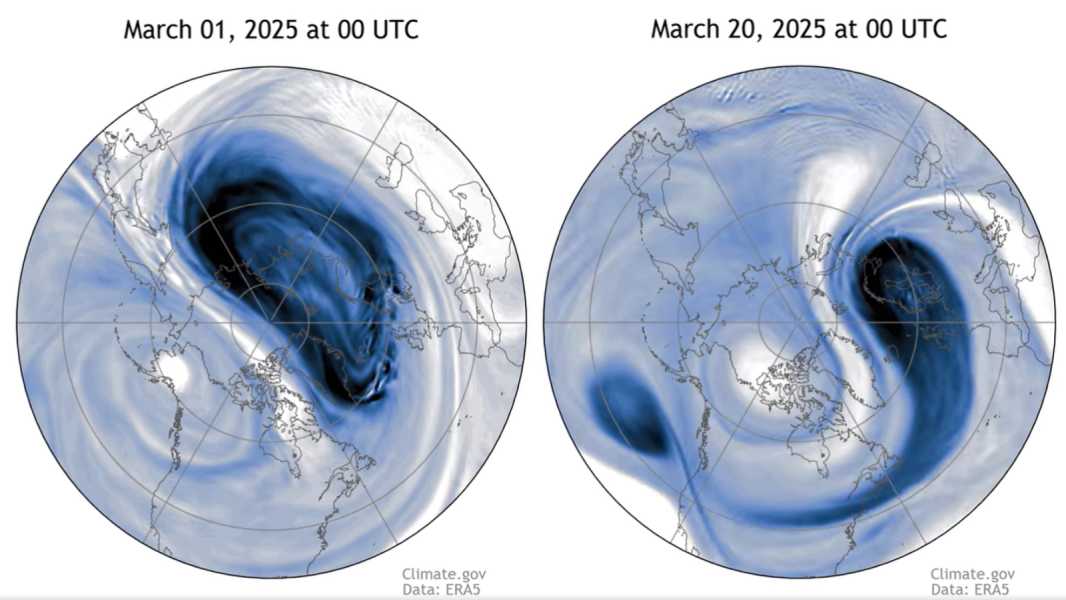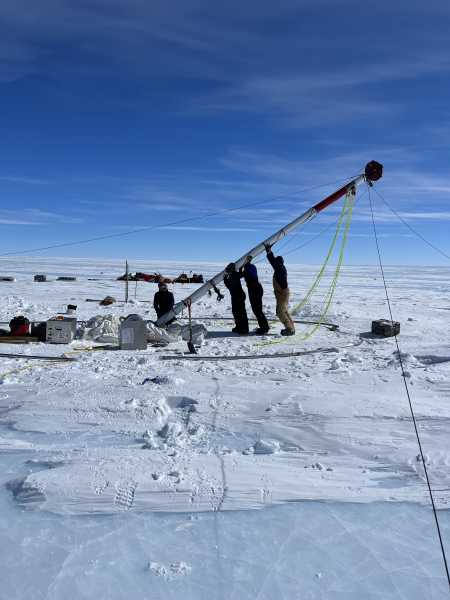
Between March 1 and 20, the polar vortex moved from the Arctic to the Northern European region. (Image credit: NOAA Climate)
A new animation shows that a major disruption to the Arctic polar vortex has shifted the ring of wind surrounding the North Pole from its usual location towards Europe.
Climate scientists say the shift could lead to colder-than-normal temperatures in parts of the continent and the eastern United States in the coming week.
The polar vortex began to deviate from its course on March 9, when its strong winds suddenly changed direction from west to east. This phenomenon usually happens every year, but usually in mid-April — hence the change in direction happened abnormally early this year, according to a blog published April 3 by the National Oceanic and Atmospheric Administration (NOAA).
Polar Vortex Moves From Pole Towards Northern Europe (March 2025) – YouTube
See more
“The polar vortex has been powerful for much of this winter season,” NOAA officials wrote in a blog post. “But like a true atmospheric star, the polar vortex saved one last trick, collapsing in spectacular fashion and bringing with it some cold air.”
The Arctic polar vortex is a circle of strong, cold winds that forms over the North Pole each winter. The vortex is always present, but its strength increases in winter due to the redistribution of heat from the tropics. In winter, the winds that make up the polar vortex blow from west to east. In the spring, when the Earth's tilt changes and the North Pole receives more sunlight, the winds switch to east and west. The winds also become less intense due to less heat flowing from the tropics to the pole.
These winds are found in the stratosphere, a layer of the atmosphere that extends from 10 to 50 kilometers (6 to 31 miles) above the Earth's surface.
Periodic “sudden stratospheric warming” events can disrupt the polar vortex. These events occur when large-scale atmospheric waves known as Rossby waves rise into the stratosphere, causing dramatic temperature swings. Like ocean waves, Rossby waves can “break” on top of the polar vortex, weakening it and, in extreme cases, reversing its winds.
Last year, a sudden stratospheric warming affected the polar vortex and changed the direction of its winds in early March, but the vortex recovered. This time, “the vortex is unlikely to regain its strength,” NOAA officials said.
However, the change in wind direction does not mean that the polar vortex will immediately disappear for the summer. The reverse polar vortex has simply “moved away from the pole, wandering around northern Europe,” officials said.
The latest NOAA forecasts indicate that the polar vortex is unlikely to return to its usual location over the North Pole. It also probably won't regain its winter strength, experts said, so there's a chance it will dissipate and eventually “hibernate” over northern Europe.
As the polar vortex dissipates, it will bring below-normal temperatures to northern Europe, parts of Asia and the eastern United States, NOAA officials said. “Temperatures in late March have been fairly normal in the eastern United States, but the latest forecasts call for an increased chance of below-normal temperatures next week,” they added.
Sourse: www.livescience.com





